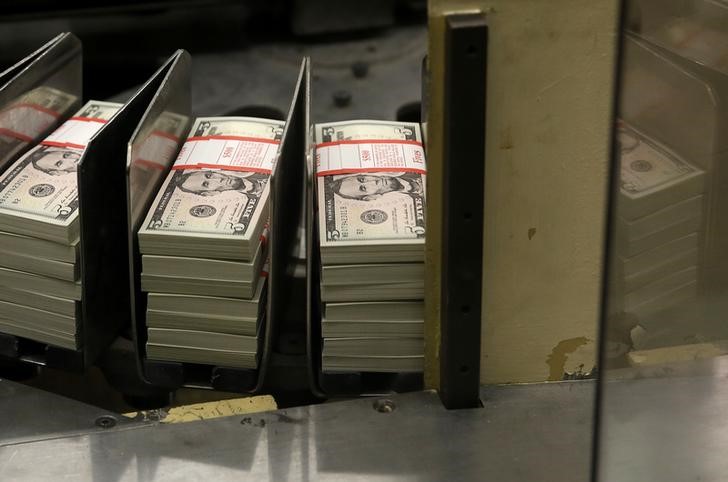Fubotv earnings beat by $0.10, revenue topped estimates
Investing.com - The U.S. dollar inched lower Thursday, weighed by renewed trade concerns, while sterling slipped after data showed the U.K. economy contracted sharply in April.
At 04:30 ET (08:30 GMT), the Dollar Index, which tracks the greenback against a basket of six other currencies, dropped 0.3% to 98.280, after earlier falling to its weakest level since April 22.
Trade framework lacks details
The dollar retreated Thursday, struggling to keep the bounce generated by U.S. President Trump stating on Wednesday that a trade framework with China is "done," subject to approval by him and President Xi Jinping.
Markets seemed to be cautiously assessing the agreement, with analysts flagging that the announcement was short of many concrete details and possibly left the door open for a future flare-up in the spat between the world’s two largest economies.
Trump added that the U.S. plans to send out letters to dozens of nations in the coming weeks that will set out the terms of trade deals, flagging that these countries will then have to choose whether to "take it, or [...] leave it."
The president paused the implementation of his broadest tariffs in April, in a bid to give negotiators time to hammer out a series of agreements, but the 90-day halt is set to end on July 8.
“This keeps the risk of a 9 July cliff-edge jump in tariffs on the table – again seen as a dollar negative,” said analysts at ING, in a note.
Also weighing on the greenback is the possibility of an early rate cut by the Federal Reserve after a benign consumer inflation print.
There is another inflation print due later in the session, with economists expecting that the producer price index for final demand edged up by 0.2% month-over-month in May, after it fell by 0.5% in the prior month.
U.K. economy contracted in April
In Europe, GBP/USD slipped 0.1% to 1.3540 after data showed that the U.K economy contracted in April, with gross domestic output shrinking by a larger-than-expected 0.3% in April from March - the biggest monthly drop since October 2023.
“This softer GDP data, following the softer wage data earlier this week, will suggest the Bank of England does have good reason to cut rates after all,” ING said.
The U.K central bank meets next week, having cut interest rates by 25 basis points to 4.25% at its last meeting in May.
EUR/USD traded 0.4% higher to 1.1530, with the single currency also in demand against most other currencies, drawing support from relatively hawkish European Central Bank rhetoric.
Last week, the ECB cut interest rates as expected but hinted at a pause in its year-long easing cycle after inflation finally returned to its 2% target.
“On the calendar today are a lot of ECB speakers. Probably up for discussion is whether the ECB needs to cut rates again in September. Price data and the ECB’s wage tracker data suggest the ECB does have room to cut. And the market just about prices a cut for December,” ING added.
Yen/yuan edge higher
In Asia, USD/JPY traded 0.5% lower to 145.92, while USD/CNY slipped 0.1% to 7.1825, after President Donald Trump took a softer stance while affirming progress in U.S.-China trade negotiations.
